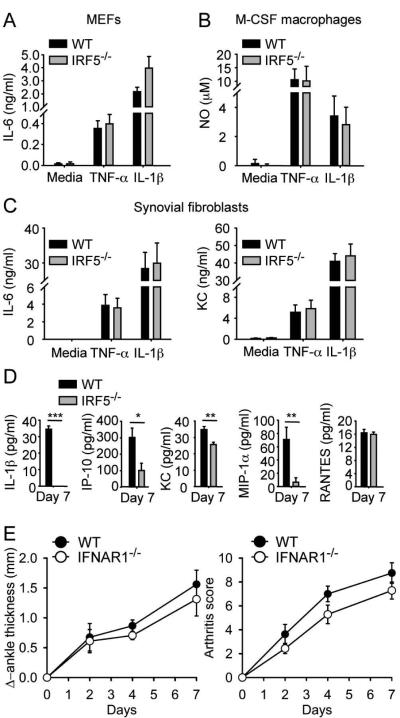Figure 2.
IRF5 deficiency does not impair IL-1 receptor signaling, but IRF5-deficient mice have reduced serum IL-1β and chemokine levels after K/BxN serum transfer. (A) Mouse embryonic fibroblasts (MEFs), (B) M-CSF bone marrow-derived macrophages and (C) synovial fibroblasts from C57BL/6 wildtype (WT) and IRF5-deficient (IRF5−/−) mice were stimulated, or not stimulated (media), with TNF-α (10 ng/ml) and IL-1β (10 ng/ml). Supernatants were collected after 24 h and IL-6 and KC measured by ELISA and nitric oxide (NO) measured by the Griess method. Data represent mean ± SEM of 5 independent experiments (A and C) and 4 independent experiments (B). (D) Serum cytokines were measured on day 7 after K/BxN serum injection in the C57BL/6 WT (n = 10) and IRF5−/− (n = 10) mice shown in Figure 1. Data represent mean ± SEM. * = P < 0.05; ** = P < 0. 01; *** = P < 0. 001. (E) C57BL/6 WT ( n = 8) and IFNAR1-deficient (IFNAR1−/−(n = 7)) mice were injected i.p. with 150 μl of K/BxN serum on day 0 and day 2. Change in ankle thickness (left) and clinical score (right) were measured on days 0, 2, 4 and 7.

